- Clone
- 3F9 (See other available formats)
- Regulatory Status
- RUO
- Workshop
- VII 70502
- Other Names
- IL-10 Receptor, IL-10R
- Isotype
- Rat IgG2a, κ
- Barcode Sequence
- TCCCTAGTAGTATAG
| Cat # | Size | Price | Quantity Check Availability | ||
|---|---|---|---|---|---|
| 308819 | 10 µg | $369.00 | |||
CD210, also known as the IL-10 receptor, is a 90-110 kD protein expressed on T cells, B cells, NK cells, monocytes and macrophages. CD210 belongs to the class II cytokine receptor family which includes the IFN-γ receptor (CDw119), the IFN-α/β receptor (CD118) and tissue factor (CD142). The IL-10 receptor is involved in signal transduction by inducing phosphorylation of STAT1a and STAT3 and by inducing activation of Jak1 and Tyk.
Product Details
- Verified Reactivity
- Human, Cynomolgus, Rhesus
- Reported Reactivity
- African Green, Baboon
- Antibody Type
- Monoclonal
- Host Species
- Rat
- Immunogen
- shIL-10R
- Formulation
- Phosphate-buffered solution, pH 7.2, containing 0.09% sodium azide and EDTA
- Preparation
- The antibody was purified by chromatography and conjugated with TotalSeq™-D oligomer under optimal conditions.
- Concentration
- 0.5 mg/mL
- Storage & Handling
- The antibody solution should be stored undiluted between 2°C and 8°C. Do not freeze.
- Application
-
PG - Quality tested
- Recommended Usage
-
Each lot of this antibody is quality control tested by immunofluorescent staining with flow cytometric analysis and the oligomer sequence is confirmed by sequencing. TotalSeq™-D antibodies are compatible with Mission Bio’s Tapestri Single-Cell Sequencing Platform for simultaneous detection of DNA and Protein.
To maximize performance, it is strongly recommended that the reagent be titrated for each application, and that you centrifuge the antibody dilution before adding to the cells at 14,000xg at 2 - 8°C for 10 minutes. Carefully pipette out the liquid avoiding the bottom of the tube and add to the cell suspension. For Proteogenomics analysis, the suggested starting amount of this reagent for titration is ≤ 1.0 µg per million cells in 100 µL volume. Refer to the corresponding TotalSeq™ protocol for specific staining instructions.
Buyer is solely responsible for determining whether Buyer has all intellectual property rights that are necessary for Buyer's intended uses of the BioLegend TotalSeq™ products. For example, for any technology platform Buyer uses with TotalSeq™, it is Buyer's sole responsibility to determine whether it has all necessary third party intellectual property rights to use that platform and TotalSeq™ with that platform. - Application Notes
-
Clone 3F9 recognizes the IL-10-binding epitope of IL-10R1.8 Additional reported applications (for the relevant formats) include: immunoprecipitation1, in vitro blocking1-3 of human IL-10 binding to IL-10R. For most successful immunofluorescent staining results, it may be important to maximize signal over background by using a relatively bright fluorochrome-antibody conjugate (Cat. No. 308804) or by using a high sensitivity, three-layer staining technique (e.g., including a biotinylated anti-rat IgG second step), followed by SAv-PE (Cat. No. 405204). The Ultra-LEAF™ purified antibody (Endotoxin < 0.01 EU/µg, Azide-Free, 0.2 µm filtered) is recommended for highly sensitive assays (Cat. No. 308817 and 308818).
- Additional Product Notes
-
TotalSeq™-D reagents are designed to profile protein expression at single cell level. The Mission Bio Tapestri platform and sequencer (e.g. Illumina analyzers) are required. Please contact technical support for more information, or visit biolegend.com/totalseq/single-cell-dna
The barcode flanking sequences are CGAGATGACTACGCTACTCATGG (PCR handle), and GAGCCGATCTAGTATCTCAGT*C*G (capture sequence). * indicates a phosphorothioated bond, to prevent nuclease degradation.
View more applications data for this product in our Application Technical Notes. -
Application References
(PubMed link indicates BioLegend citation) -
- Liu Y, et al. 1997. J. Immunol. 158:604. (Immunogen, IP, Block)
- Levings MK, et al. 2005. Blood 105:1162. (Block)
- Goodier MR, et al. 2000. J. Immunol. 165:139. (Block)
- Huang YH, et al. 2009. J. Leukoc. Biol. 86:273. PubMed
- Yoshino N, et al. 2000. Exp. Anim. (Tokyo) 49:97. (FC)
- Liu BS,et al. 2011. J Leukoc Biol. 89:981. PubMed
- Joffe M, et al. 2012. Int Immunol. 24:447. PubMed
- MacDonald KP, et al. 1999. J. Immunol. 163:5599. (epitope)
- RRID
-
AB_2894594 (BioLegend Cat. No. 308819)
Antigen Details
- Structure
- Ig superfamily, class II cytokine receptor family, transmembrane glycoprotein, 90-110 kD
- Distribution
-
T cells and B cells, NK cells, monocytes, macrophages
- Function
- Activates STAT1, STAT3, Jak1, Tyk
- Ligand/Receptor
- IL-10
- Cell Type
- B cells, Macrophages, Monocytes, NK cells, T cells
- Biology Area
- Immunology
- Molecular Family
- CD Molecules, Cytokine/Chemokine Receptors
- Antigen References
-
1. Kotenko S. 2002. Cytokine Growth Factor Rev. 13:223.
2. Trinchieri G. 2003. Nat. Rev. Immunol. 3:133. - Gene ID
- 3587 View all products for this Gene ID
- UniProt
- View information about CD210 on UniProt.org
Other Formats
View All CD210 Reagents Request Custom Conjugation| Description | Clone | Applications |
|---|---|---|
| PE anti-human CD210 (IL-10 R) | 3F9 | FC |
| Purified anti-human CD210 (IL-10 R) | 3F9 | FC,IP,Block |
| APC anti-human CD210 (IL-10 R) | 3F9 | FC |
| PE/Cyanine7 anti-human CD210 (IL-10 R) | 3F9 | FC |
| Brilliant Violet 421™ anti-human CD210 (IL-10 R) | 3F9 | FC |
| Ultra-LEAF™ Purified anti-human CD210 (IL-10 R) | 3F9 | FC,IP,Block |
| TotalSeq™-D1170 anti-human CD210 (IL-10 R) | 3F9 | PG |
| TotalSeq™-A1170 anti-human CD210 (IL-10 R) | 3F9 | PG |
| TotalSeq™-B1170 anti-human CD210 (IL-10 R) | 3F9 | PG |
Compare Data Across All Formats
This data display is provided for general comparisons between formats.
Your actual data may vary due to variations in samples, target cells, instruments and their settings, staining conditions, and other factors.
If you need assistance with selecting the best format contact our expert technical support team.
-
PE anti-human CD210 (IL-10 R)
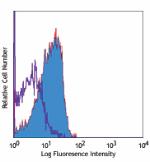
Human peripheral blood lymphocytes stained with 3F9 PE -
Purified anti-human CD210 (IL-10 R)
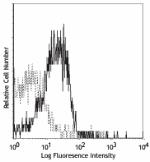
Whole blood lymphocytes stained with purified 3F9, then dete... -
APC anti-human CD210 (IL-10 R)

Human peripheral blood lymphocytes were stained with CD210 (... -
PE/Cyanine7 anti-human CD210 (IL-10 R)
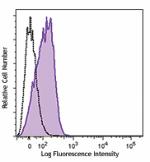
Human peripheral blood lymphocytes were stained with CD210 (... -
Brilliant Violet 421™ anti-human CD210 (IL-10 R)
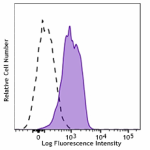
Human peripheral blood lymphocytes were stained with CD210 (... -
Ultra-LEAF™ Purified anti-human CD210 (IL-10 R)
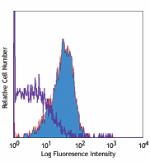
Human peripheral blood lymphocytes stained with LEAF™ purifi... -
TotalSeq™-D1170 anti-human CD210 (IL-10 R)
-
TotalSeq™-A1170 anti-human CD210 (IL-10 R)
-
TotalSeq™-B1170 anti-human CD210 (IL-10 R)
